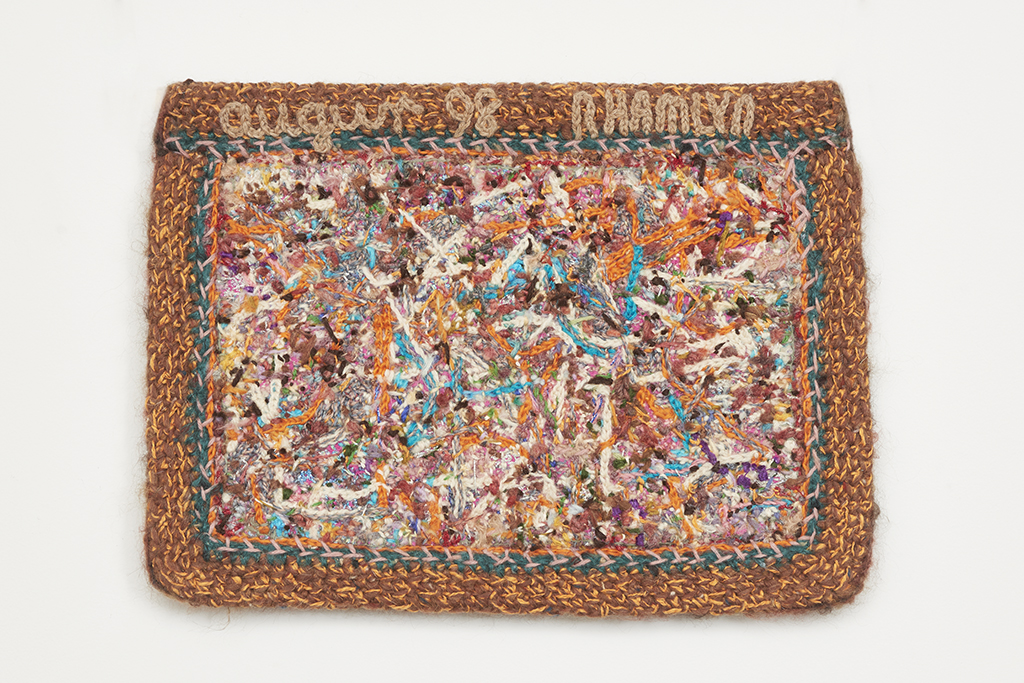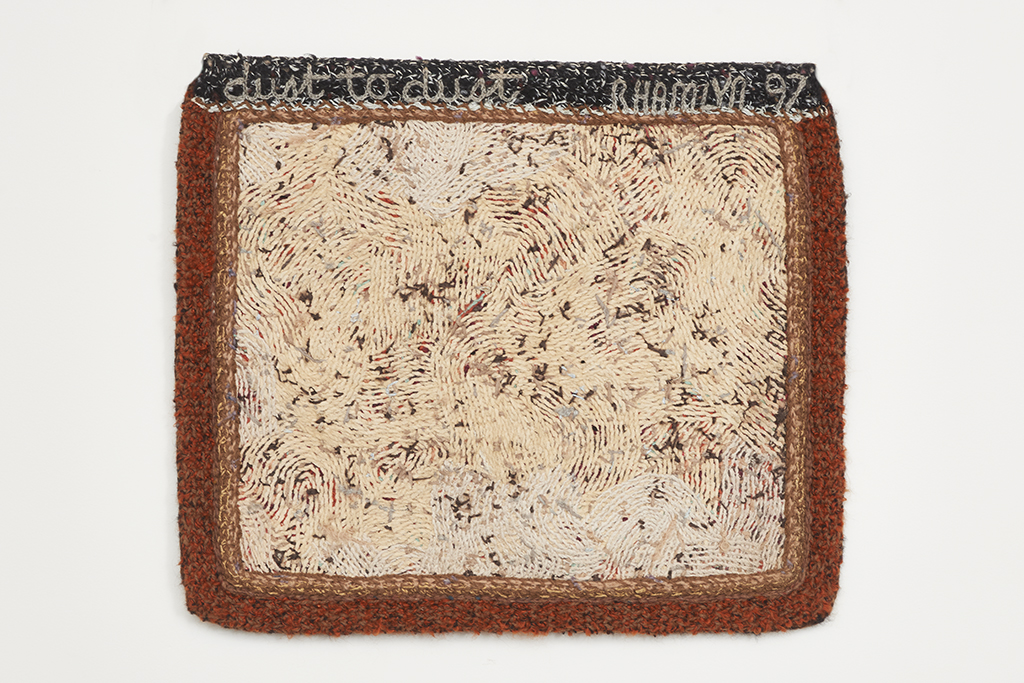Highlights from the ANU Art Collection: Rhonda Hamlyn
Rhonda Hamlyn, 'Augur' 1998; mixed fibre construction, 29 x 41 x 1.5 cm. Acquired 2022, ANU Art Collection. © Rhonda Hamlyn/Copyright Agency, 2024.
Dust to dust, 1997
Augur, 1998
Rhonda Hamlyn (1944–2015)
‘If you feel and think of art as being a fundamental part of life… art becomes a versatile multiple of forms.’
Rhonda Hamlyn, 1985
For Rhonda Hamlyn, a shy and reclusive woman living in strained circumstances in Sydney’s outer suburbs, art was a lifeline with which she wove a connective tissue between herself and the world. Graduating with a diploma of painting from the Sydney Technical College in 1965 Rhonda had one solo exhibition of paintings at Watters Gallery in 1967 before she stopped painting. The 1970s saw her focus on pen and ink drawings, primarily of thickets of trees and branches. With their lack of depth or horizon line, the images, often depicting a trapped woman, suggest a claustrophobic anxiety. The eye is forced to the surface where the intricate patterning of intertwined twigs is reminiscent of finely woven lace. The drawings were well received but Rhonda wanted to paint. In 1982 she sent her dealer, Frank Watters, a collection of postcard sized drawings of cramped domestic interiors, the plan was to paint them. One gets the sense that her own tight living arrangements were pressing in on her. Perhaps it was a lack of physical and mental space in the Paramatta house she shared with her parents that prevented her return to painting. She briefly sought a way out of the domestic thicket through collage but in the end it was textiles that fitted her life and satisfied her mind.

From 1982 Rhonda dedicated her life to textile art. At some point over the next two years her mother, Susannah Hamlyn, joined her. Their lives changed in 1984 when Susannah’s husband, Rhonda’s father, Jack Hamlyn died. ‘We felt we had no family history that we could look back to, that we were beginning’, Rhonda explained. Their collaborative rugs evolved like so many impromptu conversations – in response to ideas, materials, and each other – binding them to their new world and to one another. Despite the struggle of critics to define the undulating textural forms the Hamlyn’s collaborations proved popular: ‘Masterfully textured and coloured,’ wrote Bronwyn Watson for the Sydney Morning Herald, ‘they are like organic forms that continue to grow even as you look at them.’ Through the creation of what they termed “patterned rugs” mother and daughter, did not just come to terms with their domestic situation but transformed it into a studio of endless creative possibilities.


The meditative process Rhonda developed in creative conversation with her mother continued to feed her mind and connect her to the world after Susannah’s death in 1994. Although, like many works from this period of her career Dust to dust and Augur appear to be dictated by an internal logic, they were in fact created in the same informal and meandering style Rhonda had shared with her mother. ‘I explore ideas and words in a contemplative journey…’, Rhonda told curator Gillian McCracken, ‘I work on both back and front in no particular order, just as it feels right to me.’ The strength of mind to follow her own path while remaining open to outside influence kept Rhonda and her work in a fluid and equal conversation with the world around her. By the time she created Dust to dust and Augur Rhonda Hamlyn’s solo and collaborative works were speaking from the walls of the Art Gallery of New South Wales, Art Gallery of South Australia, Freemantle Arts Centre, National Gallery of Victoria, National Gallery of Australia, Powerhouse Museum, and the University of New South Wales. For Rhonda Hamlyn art was a fundamental. A versatile multiple of forms that opened the door between her rich inner life and a world of continuous inspiration.
The Drill Hall Gallery acknowledges the Ngunnawal and Ngambri peoples, the traditional custodians of the Canberra region, and recognises their continuous connection to culture, community and Country.
Contact
Close
Subscribe
Close
Close